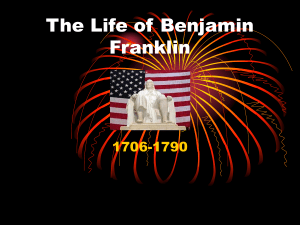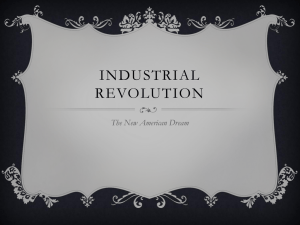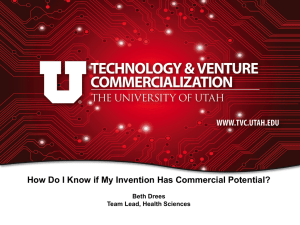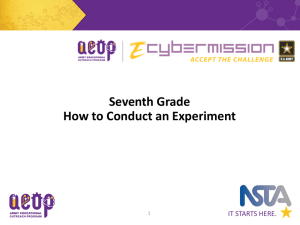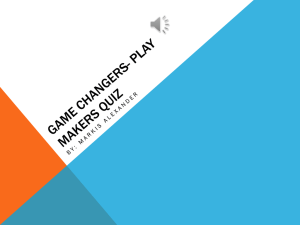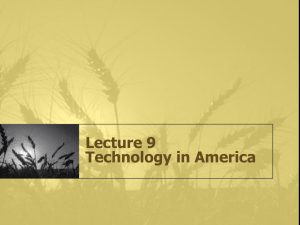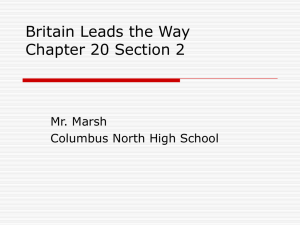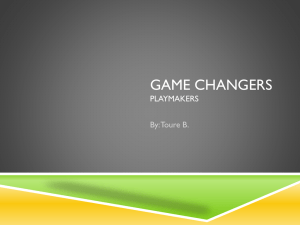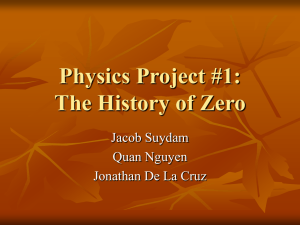Now & Ben Power Point - Tennessee Trending Teacher
advertisement
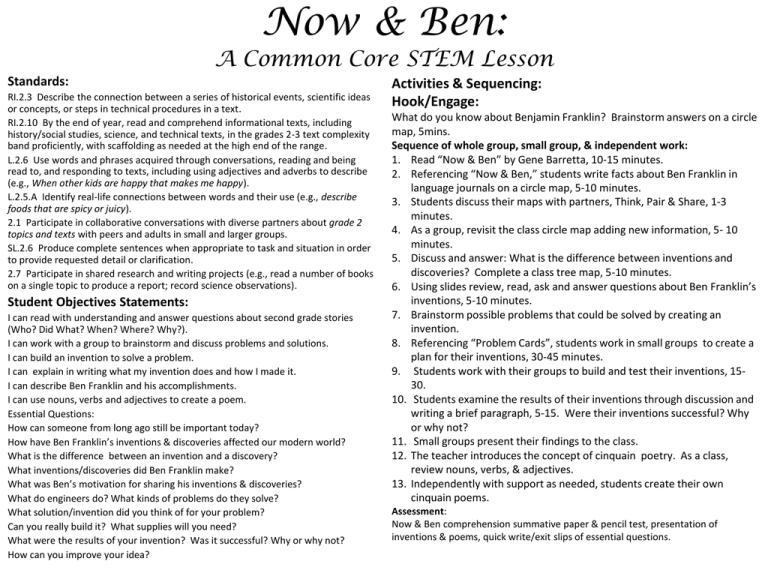
Now & Ben: A Common Core STEM Lesson Standards: RI.2.3 Describe the connection between a series of historical events, scientific ideas or concepts, or steps in technical procedures in a text. RI.2.10 By the end of year, read and comprehend informational texts, including history/social studies, science, and technical texts, in the grades 2-3 text complexity band proficiently, with scaffolding as needed at the high end of the range. L.2.6 Use words and phrases acquired through conversations, reading and being read to, and responding to texts, including using adjectives and adverbs to describe (e.g., When other kids are happy that makes me happy). L.2.5.A Identify real-life connections between words and their use (e.g., describe foods that are spicy or juicy). 2.1 Participate in collaborative conversations with diverse partners about grade 2 topics and texts with peers and adults in small and larger groups. SL.2.6 Produce complete sentences when appropriate to task and situation in order to provide requested detail or clarification. 2.7 Participate in shared research and writing projects (e.g., read a number of books on a single topic to produce a report; record science observations). Student Objectives Statements: I can read with understanding and answer questions about second grade stories (Who? Did What? When? Where? Why?). I can work with a group to brainstorm and discuss problems and solutions. I can build an invention to solve a problem. I can explain in writing what my invention does and how I made it. I can describe Ben Franklin and his accomplishments. I can use nouns, verbs and adjectives to create a poem. Essential Questions: How can someone from long ago still be important today? How have Ben Franklin’s inventions & discoveries affected our modern world? What is the difference between an invention and a discovery? What inventions/discoveries did Ben Franklin make? What was Ben’s motivation for sharing his inventions & discoveries? What do engineers do? What kinds of problems do they solve? What solution/invention did you think of for your problem? Can you really build it? What supplies will you need? What were the results of your invention? Was it successful? Why or why not? How can you improve your idea? Activities & Sequencing: Hook/Engage: What do you know about Benjamin Franklin? Brainstorm answers on a circle map, 5mins. Sequence of whole group, small group, & independent work: 1. Read “Now & Ben” by Gene Barretta, 10-15 minutes. 2. Referencing “Now & Ben,” students write facts about Ben Franklin in language journals on a circle map, 5-10 minutes. 3. Students discuss their maps with partners, Think, Pair & Share, 1-3 minutes. 4. As a group, revisit the class circle map adding new information, 5- 10 minutes. 5. Discuss and answer: What is the difference between inventions and discoveries? Complete a class tree map, 5-10 minutes. 6. Using slides review, read, ask and answer questions about Ben Franklin’s inventions, 5-10 minutes. 7. Brainstorm possible problems that could be solved by creating an invention. 8. Referencing “Problem Cards”, students work in small groups to create a plan for their inventions, 30-45 minutes. 9. Students work with their groups to build and test their inventions, 1530. 10. Students examine the results of their inventions through discussion and writing a brief paragraph, 5-15. Were their inventions successful? Why or why not? 11. Small groups present their findings to the class. 12. The teacher introduces the concept of cinquain poetry. As a class, review nouns, verbs, & adjectives. 13. Independently with support as needed, students create their own cinquain poems. Assessment: Now & Ben comprehension summative paper & pencil test, presentation of inventions & poems, quick write/exit slips of essential questions. Let's Read... At the time of his death in 1790, when more than 5,000 of them had been built, Ben Franklin had collected no money from his glass armonica. He refused to patent any of his inventions, saying: "As we enjoy great Advantages from the Inventions of others we should be glad of an Opportunity to serve others by any Invention of ours, and this we should do freely and generously." Ben certainly gave freely and generously, constantly investing time and energy to make his ideas a useful or entertaining reality. Lightning Rod How it works… Original Modern Garbage clutters parks, streets, and lawns. What kind of device would be most helpful to pick up the trash? Eggs crack with the slightest bump. What kind of contraption will protect an egg that is dropped from a large height? Spare change has a way of collecting in wallets, purses and odd containers. What kind of machine could help sort your mixed coins? Toothpicks are great for getting broccoli out of your teeth. But do they have other uses? Could they be used to build a bridge? Getting out of bed to open or close your door is a read pain. How can you build something that will open and close the door from across the room? Your pet drinks so much that his water bowl us always empty. What kind of device would fukk a water bowl automatically? Newspaper pile up day after day. There must be something fun to do with them. Could newspaper be used to build a fort? It’s a bother getting out of the pool to get something to drink. How could you stay afloat and quench your thirst at the same time? Invention/Solution Design... Problem: Can this problem be fixed with an invention? Principle: What do I already know? Ideas: What is my solution? What is my invention? Plan: What supplies will I need? How will I build my invention? Create: Build it! Take or draw a picture of the invention. Improve: Did my invention fix the problem? What would I change? How could I make it better? Let’s review what we already know… Man sister famous run create pretty teacher walk five red fancy boy doctor think Assignment: Use what you have learned about Ben Franklin and write your own Cinquain poem. Be ready to share your poem when you are finished. Let's start by making a list of nouns, verbs, and adjectives.


